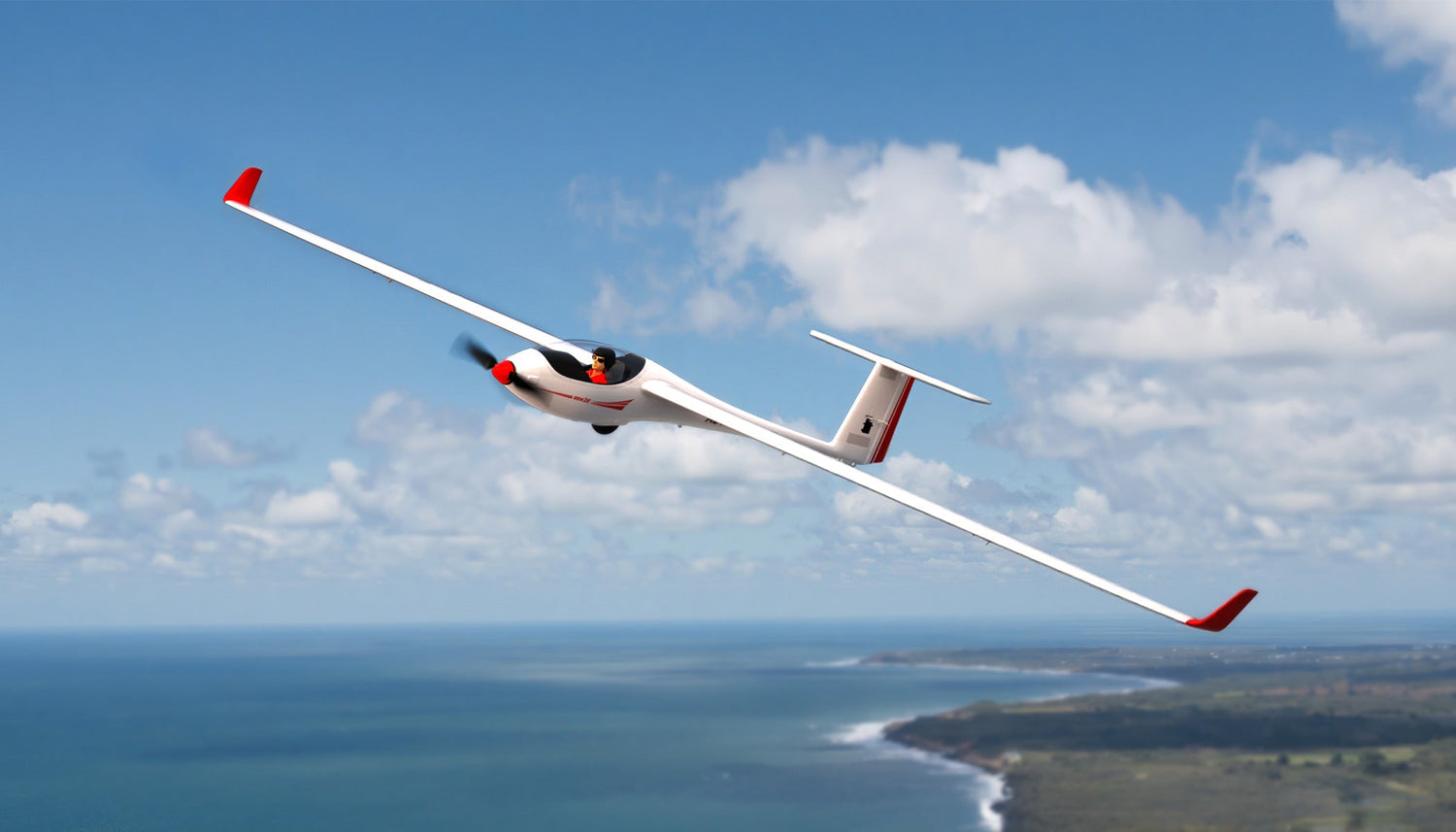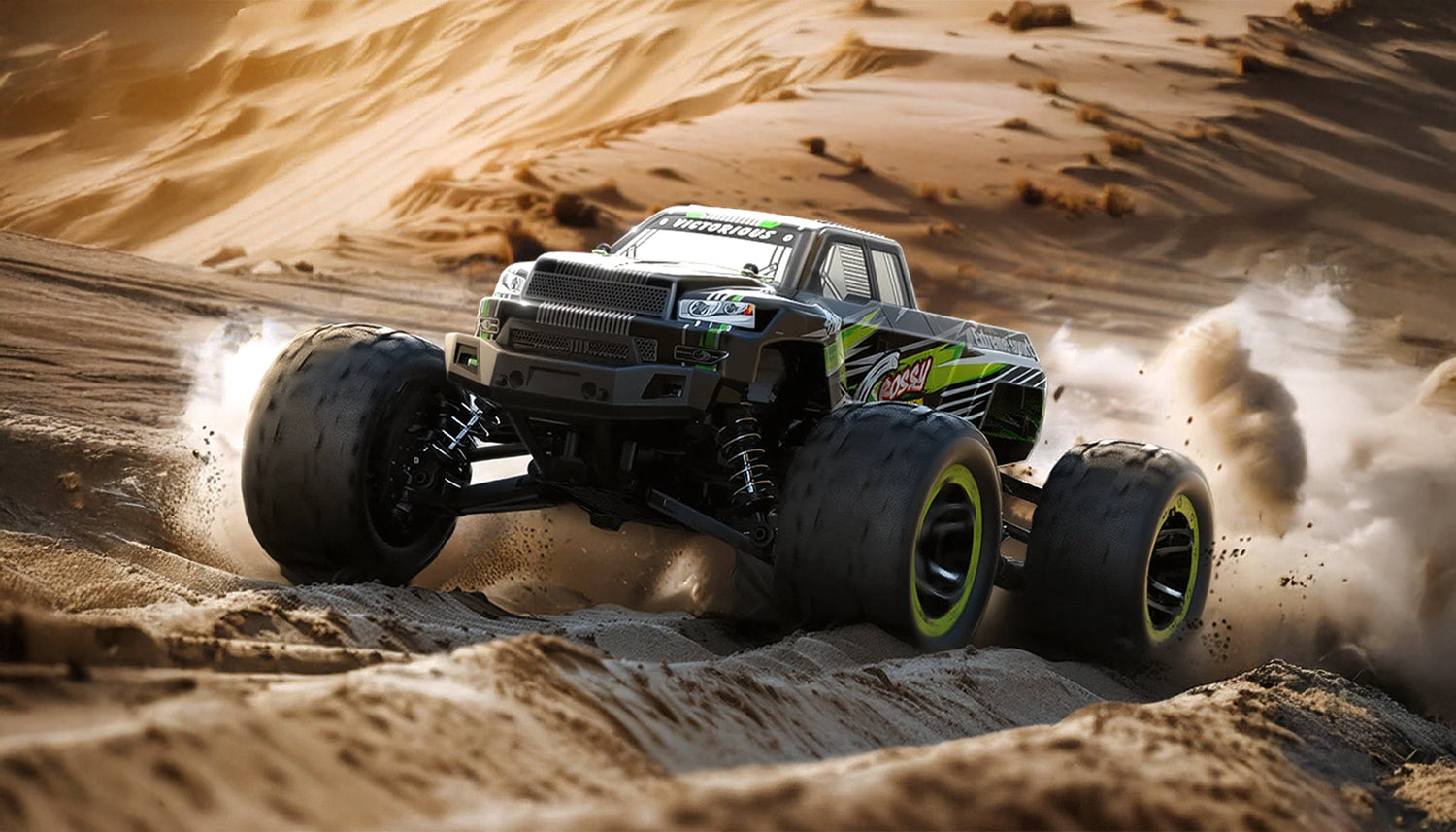As a newcomer to the radio control flying hobby, learning about the primary rc airplane controls of your new plane is essential for becoming a good pilot, and getting the most out of your model.
Every operation that is controllable on an rc airplane is referred to as a 'channel'.
By the way, if you are a beginner and want to buy a remote control airplane, please purchase a ready-to-fly plane of any brand. You can use it right away upon receiving it, and there is no need to buy additional accessories.
Overview of Channel Definition
| Channel Type | Functions Included | Recommended For | Description |
|---|---|---|---|
| 2-Channel | Throttle, Rudder | Kids or beginners | Basic control, suitable for new pilots. Dual motors allow for forward movement and left/right turns but may become dull for older users. |
| 3-Channel | Throttle, Rudder, Elevator | Beginners (14+ years) | Introduces vertical control, allowing ascent and descent. Ideal for learning basic flying skills with more control than 2-channel models. |
| 4-Channel | Throttle, Rudder, Elevator, Aileron | Experienced pilots | Adds roll control with ailerons, enabling more advanced maneuvers. Recommended for those with some flying experience. |
| 5-Channel | Throttle, Rudder, Elevator, Aileron, Flap | Advanced pilots | Designed for larger planes, allows for additional features like flaps for better takeoff/landing, and can include functions like camera switches or landing gear. |
| 6-Channel & Plus | Varies by model | Professional pilots | More channels allow for complex maneuvers and additional equipment control, tailored to specific flight needs. |
2-Channel
The most basic plane type which is consist of throttle and rudder. It is simple to understand as entry-hobby level.
3-Channel
To get a true feeling and understanding of radio control flying, a RC plane with 3 chanels is more recommanded. With throttle, rudder and elevator, it obviously brings more controls to the plane to fly the way you want.
4-Channel
For RC pilots with plenty of skills, 4-channel planes are more popular. With the aileron included, you can fly the plane "like" a plane now.
5-Channel
The 5th channel is normally used for larger planes, which adds the flap to help landing and take off. The 5th channel is more flexible used not just as flap, any feature besides throttle, aileron, rudder, elevator can be considered as channel 5.
6-Channel and Plus
More channels added are common on professional RC planes, controlled by expert pilots. Depends on the features needed, more channels can be used as equipment switch, signal, etc.
There are no set rules as to how many channels a rc plane must have, it all comes down to the number of functions the pilot wants to have control over.
The control surfaces are hinged sections of the flying surfaces (wing, tailplane, and fin), and each control surface moves - up and down for elevators and ailerons, and left and right for rudders.
This movement changes the shape of the entire flying surface's airfoil, affecting the amount of lift/downforce/sideforce generated by that flying surface. The airplane reacts to these changes by changing its attitude and/or direction. By attitude, we mean the plane's orientation in relation to the horizontal. For instance, if the plane is pointing up, it has a nose-up attitude.
Feature of Each Channel (4 basic channels)

Throttle
Throttle controls motor speed and hence how fast or slow the propeller spins. In turn, this changes the amount of thrust produced.
Elevators
The elevators are the hinged section of the tailplane. They are also known as horizontal stabiliser located at the very rear of the airplane and are the single most important control surface. They directly effect the plane's airspeed.
Elevators control the horizontal pitch attitude of the airplane, in other words whether the nose of the plane points upwards or downwards. When elevators are deflected upwards the plane's nose is forced to point upwards, and with the elevators deflected downwards then the nose is forced downwards. This resulting nose up/nose down pitch attitude comes about as the upward/downward deflection of the elevators changes the amount of down force being generated by the tailplane.
Elevators should be used in conjunction with rudder and/or ailerons when making a turn, to maintain altitude during the turn and also to get the plane to bank during the turn.
Ailerons
Not all rc airplane controls include ailerons, in fact many 3-channel trainers use rudder instead. But where fitted, ailerons control the roll of the airplane about its longitudinal axis (imagine a straight line running through the centre of the fuselage, from nose to tail).Ailerons work in pairs and are found on the trailing (rear) edge of the wing, and they work opposite to each other i.e. when one aileron moves up, the other one moves down and vice versa. Ailerons are used in all aerobatic maneuvers that involve a rolling motion.Rudder
The rudder is the hinged section of the fin, or vertical stabiliser, located at the back of the airplane. It's used for directional control by changing the yaw of the airplane, and works in the correct sense i.e. moving the rudder to the left causes the airplane to turn left and vice versa.Understanding the controls of your rc airplane, or any rc model, is critical if you want to enjoy your model to the fullest and get the most out of the hobby.| Control Surface | Movement Direction | Function | Description |
|---|---|---|---|
| Throttle | Forward/Reverse | Controls motor speed | Adjusts how fast the propeller spins, affecting thrust and speed of the airplane. |
| Elevators | Up/Down | Controls pitch (nose up/nose down) | Adjusts the plane's attitude by changing downforce on the tailplane; crucial for climbing and descending. |
| Ailerons | Up/Down (opposite sides) | Controls roll | Used in pairs to enable rolling maneuvers; essential for aerobatics and maintaining level flight during turns. |
| Rudder | Left/Right | Controls yaw (directional movement) | Adjusts the airplane's heading; moving left rudder turns the plane left and vice versa. |
Different control channels RC airplanes
2 Channels RC Planes for Kids

3 Channels RC Planes for Beginners
3CH Spitfire Remote Control Airplane for Beginners

4 Channels RC Planes for Experienced and Advanced Pilots
Now that the aileron is available with the other three channels. The aileron control allows the RC aircraft to perform more stunts, which is an important feature for most experienced pilots to use while flying. For pilots who have flown some time with less channel aircrafts, a small sized (40-60cm wingspan), 4 channel trainer is always advised.
VOLANTEXRC P51D Mustang 4Ch Beginner RC Airplanes

5 Channels RC Planes for Experienced and Advanced Pilots
Another feature flap is activated for improved landing and take-off. It is usually only possible on larger aircraft. However, the 5th channel can also be used for various functions such as camera switching, landing gear retract switch, and so on. So, when it talks about 5 channels, it generally means the pilot knows a lot about RC aircraft and is obtaining additional optional features for greater entertainment.
Phoenix 2400 5-Channel Glider with 2.4 Meter Wingspan

If you are a beginner pilot and would like to know more about how to choose an RC plane, please read the following article:
Top 10 Tips guide for Choosing Your First RC Plane for Beginners


































3 comments
I love the 3CH warbirds, but I’m just wondering if you include the weight of the planes.
We need to purchase bulk orders of sonic or voltarex foam gyro planes for our radio control plane shooting stand
Tanks a lot ltd
Love the warbirds beautiful little aircraft I would love to see a ww2 Hurricane and probably some with different colours